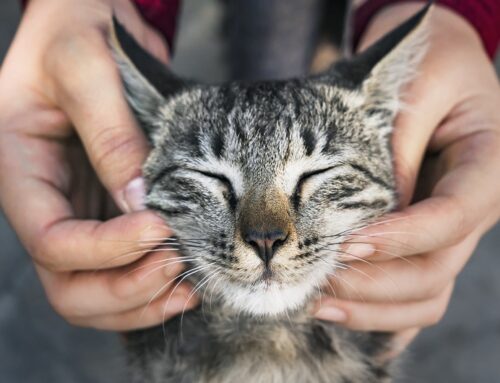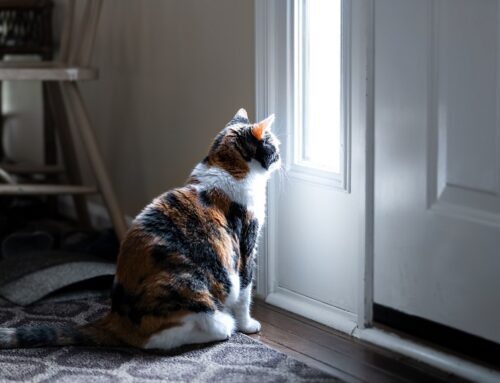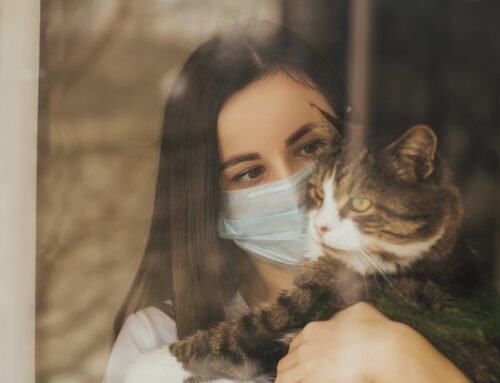This month, we will look at the last of the “routine” surgeries that we commonly perform on cats: spaying. For those who might not know, spaying is the removal of both the uterus and ovaries in a female cat. It is recommended that all female cats (that are not specifically going to be used for breeding) be spayed. There are several reasons for this.
The most important reason is population control. Cats are prolific breeders and can have multiple litters of up to 10 kittens per year. So, it easy to see how one cat can become hundreds of cats in a short time, especially once the kittens start having kittens–which can be as early as six months old!
This leads us into the next reason to spay your cat: avoiding heat cycles. Cats do not produce a discharge during their reproductive cycle (side note: if your cat is not spayed and is producing a vaginal discharge, this could be sign of a life-threating uterine infection, and you should seek veterinary care right away), but cats do become extremely obnoxious about yowling and attention-seeking. In fact, we have performed several “emergency” spays because the owners could not tolerate their cat’s in-heat behavior anymore.
During their heat cycles, female cats are also much more adamant–and usually successful–about trying to get outside. Some people have also reported seeing an increased number of male cats lurking around and spraying their house when their cat is in heat. Unlike some species of animals, female cats are “induced ovulators.” This means that the ovary does not release an egg until they are bred, and more importantly, the reproductive system will not “shut down.” Over time, many cats will eventually go into a week-long heat cycle every month until they are bred or spayed. As you can imagine, this behavior becomes very disruptive!
In addition to the aforementioned reasons, there are also certain health benefits to spaying your cat. Spayed cats have almost zero chance of developing ovarian or uterine cancer. The chance of developing a uterine infection is virtually eliminated, too. Unfortunately, spaying does not affect the development of mammary cancer, but the good news is that it’s an uncommon cancer in cats anyway.
So, what is the best age to spay your cat? There is no prefect age, but many shelters will spay as young as 8 weeks, just to ensure it’s done before the kittens are adopted out. Typically, we recommend between 4 and 6 months of age (usually 4 – 6 pounds), as anesthesia is a bit safer, and the cats have had a little time to mature before their first heat cycle.
In some cases, we have seen clients want to wait until after the first heat cycle to spay their kitten, only to end up having to wait until an unexpected litter of kittens is weaned. We have also heard people say that they want their cat to experience having kittens before getting them spayed—which is a puzzling request. There is no biological or health advantage to producing a litter of kittens before being spayed.
If their cat does become pregnant, many people aren’t quite prepared for the time and cost of potential complications such as needing emergency C-section surgery, bottle-feeding kittens from the litter every few hours until they are old enough to find permanent homes, and finally re-homing the kittens. It can be a lot of work and quite heartbreaking if something goes wrong.
If you weren’t already aware of the many benefits of spaying your female cat, hopefully this article has enlightened you. If you’ve already spayed your female feline family member, thank you for being proactive! As always, we are happy to answer any questions you may have about this routine procedure.
In closing, we want to thank everyone for making 2017 another great year, and we hope to see everyone healthy and happy in 2018! =^_^=








